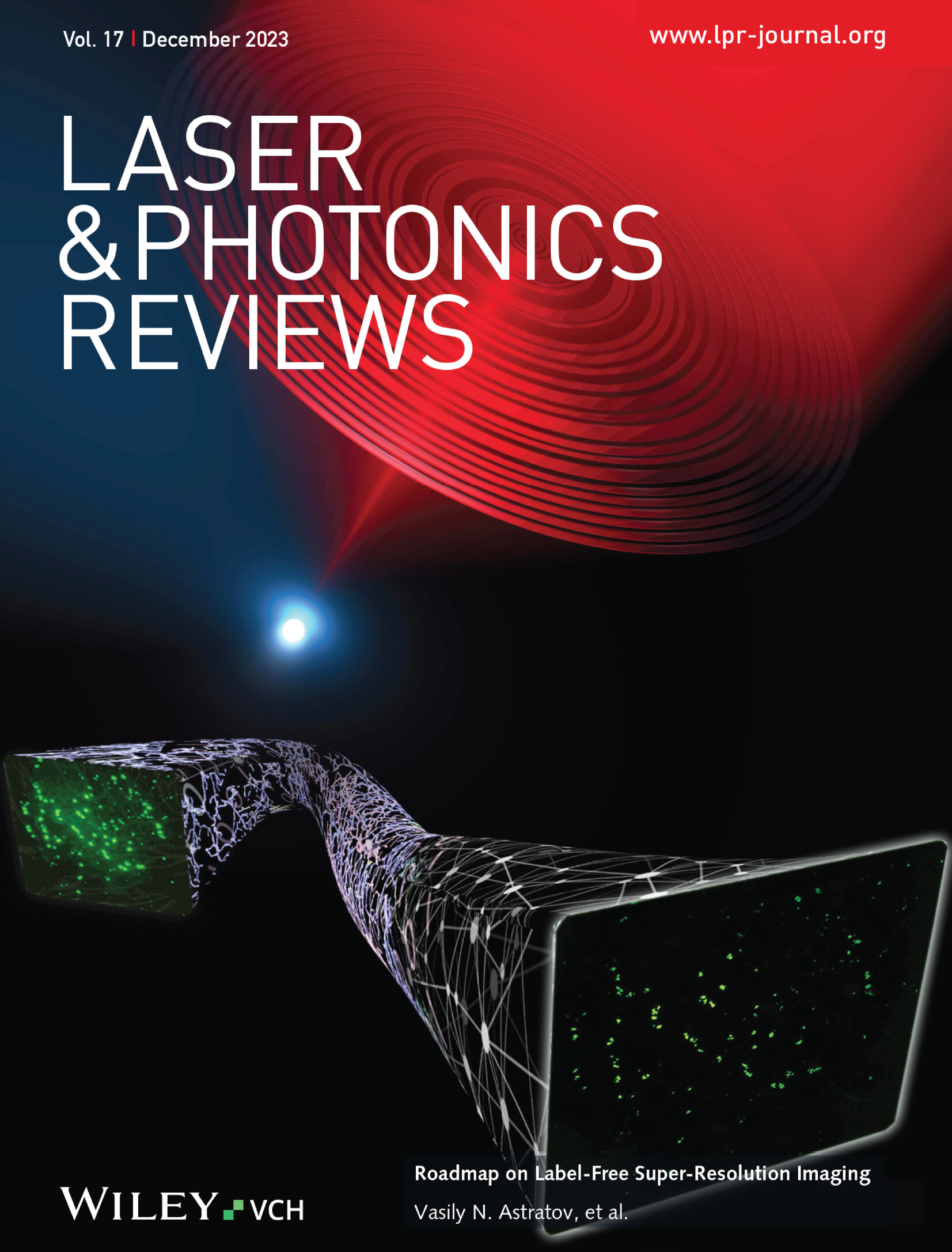Enhanced the Tunable Nonlinearity of Epsilon‐Near‐Zero Nonlocal Metasurface by Quasi‐Guided Mode
IF 9.8
1区 物理与天体物理
Q1 OPTICS
引用次数: 0
Abstract
Quasi Bound states in the continuum(Q‐BIC) with high Q‐factors provide a powerful way to enhance the nonlinearity of metasurfaces based on the epsilon‐near‐zero (ENZ). However, Q‐BIC has high Q‐factors only at specific wavevectors and specific wavelengths for given structures and is very sensitive to structural parameters. Here, a strong nonlinearity nonlocal metasurface, consisting of dielectric silicon disks on the ENZ thin film, with wavelength‐tunable in wide‐wavevectors is proposed through the strong coupling of Brillouin zone folding‐induced quasi‐guided mode (Q‐GM) and ENZ modes. All guided modes below the light‐line are folded by periodic perturbations to form Q‐GM with high Q‐factors in wide wavevectors. Benefiting from the high Q‐factors of the Q‐GM and the sufficient field overlap with ENZ modes, the localized field enhancement and an anticrossing splitting of 260 meV are achieved. The measured nonlinear refractive index coefficient of the nonlocal metasurface is 3.8 × 10利用准引导模式增强ε-近零非局部元面的可调谐非线性度
连续体中具有高 Q 因子的准约束态(Q-BIC)为增强基于ε-近零(ENZ)的元表面的非线性提供了一种强有力的方法。然而,Q-BIC 仅在特定结构的特定波向和特定波长下具有高 Q 因子,而且对结构参数非常敏感。在此,我们提出了一种强非线性非局部元表面,由 ENZ 薄膜上的介电硅盘组成,通过布里渊区折叠诱导的准引导模式(Q-GM)和 ENZ 模式的强耦合,可在宽波向进行波长调谐。光线以下的所有导波模式都在周期性扰动的作用下折叠,形成在宽波向中具有高Q系数的Q-GM。得益于 Q-GM 的高 Q 因子以及与 ENZ 模式的充分场重叠,实现了局部场增强和 260 meV 的反交叉分裂。在正常入射条件下,测量到的非局部元表面非线性折射率系数为 3.8 × 10-13 m2W-1,比氧化铟锡(ITO)薄膜的非线性折射率系数大三个数量级。此外,由于 Q-GM 在宽波矢量下具有高 Q 因子,实验观测到的非线性系数随入射角度的增加而增强,实现了宽带可调强非线性。所提出的非局部元表面为增强宽角度和多波长的非线性提供了一个前景广阔的平台。
本文章由计算机程序翻译,如有差异,请以英文原文为准。
求助全文
约1分钟内获得全文
求助全文
来源期刊
CiteScore
14.20
自引率
5.50%
发文量
314
审稿时长
2 months
期刊介绍:
Laser & Photonics Reviews is a reputable journal that publishes high-quality Reviews, original Research Articles, and Perspectives in the field of photonics and optics. It covers both theoretical and experimental aspects, including recent groundbreaking research, specific advancements, and innovative applications.
As evidence of its impact and recognition, Laser & Photonics Reviews boasts a remarkable 2022 Impact Factor of 11.0, according to the Journal Citation Reports from Clarivate Analytics (2023). Moreover, it holds impressive rankings in the InCites Journal Citation Reports: in 2021, it was ranked 6th out of 101 in the field of Optics, 15th out of 161 in Applied Physics, and 12th out of 69 in Condensed Matter Physics.
The journal uses the ISSN numbers 1863-8880 for print and 1863-8899 for online publications.

 求助内容:
求助内容: 应助结果提醒方式:
应助结果提醒方式:


